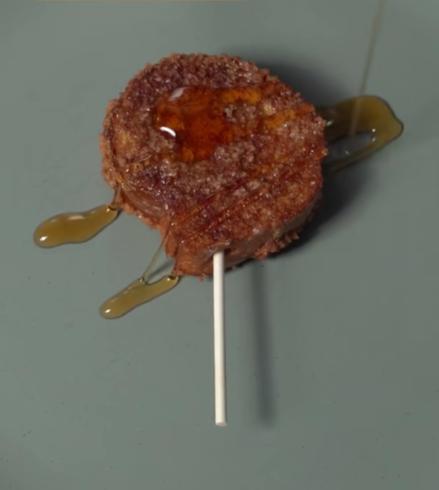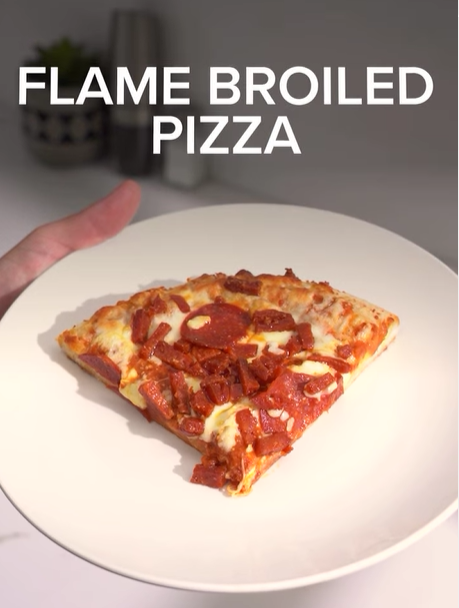French Toast Lollipops: A Fun Twist on Breakfast Classics
French Toast Lollipops: A Fun Twist on Breakfast Classics Sometimes the most delightful breakfast treats come from reimagining familiar favorites in creative new ways. These French toast lollipops transform ordinary bread into handheld breakfast treats that are as fun to make as they are to eat. Perfect for weekend breakfast adventures, special occasions, or whenever you want to surprise your family with something unexpectedly delightful, these lollipops prove that breakfast can be both delicious and playful. The genius of French toast lollipops lies in their presentation and portability. By rolling bread into spirals and coating them in a cinnamon-sugar mixture before air frying, you create individual treats that capture all the flavors of classic French toast in a convenient, mess-free format that kids and adults alike will love. Why This Recipe Works So Well French toast lollipops succeed because they concentrate all the best elements of traditional French toast into bite-sized portions while adding the excitement of eating food on a stick. Understanding the technique helps you achieve perfect results every time. The spiral rolling technique creates multiple layers of bread that absorb the egg mixture while maintaining structural integrity. This method ensures each bite contains the custardy interior and crispy exterior that makes French toast so appealing. Individual portion control makes these treats perfect for parties, family breakfasts, or meal prep since each lollipop provides just the right amount of sweetness without overwhelming portion sizes. Air frying technology creates the perfect crispy exterior while maintaining tender, custardy interiors without the need for large amounts of oil or constant monitoring that stovetop cooking requires. The cinnamon-sugar coating adds textural interest and concentrated flavor that complements the vanilla-scented bread while creating an attractive appearance that makes these treats visually appealing. Stick presentation transforms ordinary breakfast into an interactive experience that encourages slower, more mindful eating while making the treats perfect for on-the-go consumption or party serving. Choosing the Right Ingredients Success with French toast lollipops starts with selecting appropriate ingredients that work together to create the perfect texture and flavor balance. Bread selection significantly affects the final result. Day-old bread works better than fresh because it absorbs the egg mixture without becoming too soggy, while maintaining enough structure to roll and hold together during cooking. White sandwich bread or brioche provide the best texture for rolling, as they’re soft enough to manipulate without tearing while having enough substance to create satisfying spirals that hold together. Fresh eggs create the custard base that transforms plain bread into French toast. Room temperature eggs mix more easily and create smoother custard that penetrates bread evenly. Pure vanilla extract provides the classic French toast flavor that makes these treats taste familiar despite their unique presentation. Quality vanilla makes a noticeable difference in the final flavor. Brown sugar and cinnamon create the signature coating that provides sweetness, spice, and textural contrast. The combination of these warm spices evokes comfort and familiarity. Lollipop sticks should be food-safe and appropriately sized for the bread spirals. Wooden craft sticks or actual lollipop sticks work well for this application. Step-by-Step Technique for Perfect Results Creating perfect French toast lollipops requires attention to technique during each step of the process to ensure attractive presentation and optimal texture. Bread Preparation: Remove crusts from bread slices and use a rolling pin to flatten each slice until it’s thin enough to roll easily without cracking. This step is crucial for creating tight spirals that hold together. Rolling Technique: Starting from one edge, roll each flattened bread slice tightly into a spiral, ensuring the roll stays compact and even. The tighter the roll, the better it will hold together during cooking. Stick Insertion: Carefully insert the lollipop stick through the center of each spiral, ensuring it’s secure but not protruding too far from either end. The stick should provide stability without interfering with cooking. Custard Mixture: Whisk eggs and vanilla extract thoroughly until completely combined. The mixture should be smooth and well-blended to ensure even coating and flavor distribution. Dipping Process: Dip each bread spiral into the egg mixture, ensuring all surfaces are coated but not oversaturated. Allow excess mixture to drip off to prevent soggy results. Coating Application: Roll the dipped spirals in the brown sugar and cinnamon mixture, ensuring complete coverage that will create the crispy, flavorful exterior during cooking. Air Frying Setup: Preheat your air fryer to 360°F and arrange the coated spirals with adequate spacing to allow proper air circulation around each lollipop. Cooking Process: Air fry for 4 minutes on each side, monitoring for golden-brown color and crispy texture. The timing may vary slightly based on your specific air fryer model and bread thickness. Final Presentation: Allow the lollipops to cool slightly before serving to prevent burns while ensuring they’re still warm enough to provide the optimal eating experience. Recipe Variations and Customizations The basic French toast lollipop recipe provides an excellent foundation for creative variations that accommodate different tastes and dietary preferences. Flavor Variations: Add different extracts like almond or maple to the egg mixture for unique flavor profiles. Orange zest can provide citrus brightness, while a pinch of nutmeg adds warmth and complexity. Coating Alternatives: Try different sugar and spice combinations such as maple sugar with cardamom, coconut sugar with ginger, or even a savory parmesan and herb coating for unexpected flavor profiles. Filling Options: Spread thin layers of cream cheese, Nutella, or fruit preserves on the bread before rolling to create filled lollipops with surprise centers that add richness and flavor complexity. Bread Substitutions: Experiment with different bread types like cinnamon swirl bread, challah, or even croissants for varying textures and flavors that change the character of the final product. Healthy Modifications: Use whole grain bread, reduce sugar content, or substitute egg whites for whole eggs to create lighter versions that maintain the fun factor while supporting dietary goals. Seasonal Adaptations: Incorporate seasonal spices like pumpkin pie spice in fall, or add dried fruit pieces and warm spices for holiday versions that celebrate specific times of


